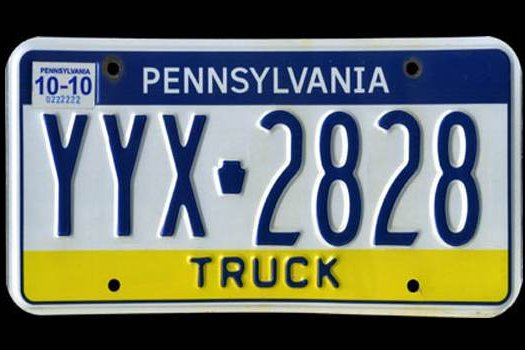
February 17, 2016
 Rouge Falconer/via Wikipedia
Rouge Falconer/via Wikipedia
On Jan. 1, 2017, the license plate sticker will fade into oblivion in Pennsylvania.
Last week, the Pennsylvania Department of Transportation announced that it will begin phasing out registration stickers at the start of 2017 in order to implement Automated License Plate Reader (ALPR) technology in law enforcement agencies statewide. At least one police chief in Pennsylvania says, however, that he has no idea how Pennsylvania plans to adequately fund the transition and train officers to use the new database.
Beaver Falls Police Chief Charles Jones told Government Technology that his department was never briefed on the impending change and that he only heard about it through the news.
“I saw it on the news and I’m the chief of police at a fairly (large) sized police department in Beaver County,” Jones said. “And I have to watch the news to find out this information?”
Under the proposed plan, PennDOT will issue its final registration stickers on Dec. 30, 2016. Customers will still be required to have their vehicles registered and inspected, but as of Jan. 1, 2017, they will no longer need to display a registration sticker. At that point, customers who renew their registrations online will be able to print and save a copy of an official registration card.
From the vantage point of police departments, this ambitious goal carries significant technology and training costs. PennDOT says the elimination of registration stickers will recoup savings of $3 million in the first year by cutting more than $2 million in annual mailing costs and $1 million in annual product costs.
Dave Piuri, president of the Beaver Valley Fraternal Order of Police, says the math doesn't quite add up.
“The last estimate I heard is that it would cost $18,000 for one of (the automated scanners),” Piuri said. “The idea that we could even get one of those readers into every police department’s hands, let alone in every police cruiser, is not realistic.”
According to the U.S. Bureau of Justice Statistics 2008 'Census of State and Local Law Enforcement Agencies,' Pennsylvania had 1,117 agencies employing 27,413 sworn police officers. For each agency to receive one machine at the estimated price quoted by Piuri, the cost would exceed $20 million. At the time of its announcement, PennDOT did not address financing for the project beyond its reference to the annual savings noted above.
Jones said he was concerned by the state's lack of communication about funding, adding that there are a lot of questions that have yet to be answered for police departments.
PennDOT believes the switch to ALPR technology will create a much more convenient renewal process for Pennsylvania drivers and eliminate the problem of stickers being counterfeited, sold and fraudulently affixed to license plates. The department eventually hopes to enable drivers to upload their registration cards to their smartphones.